Forum Replies Created
-
AuthorPosts
-
 Jeremy ShearsParticipant
Jeremy ShearsParticipantThere are some reviews here:
http://alpha-lyrae.co.uk/2014/10/25/vixen-sg-2-1×42-binoculars-review/
http://www.ianmorison.com/vixen-2-1-x-42-mm-wide-field-binoculars-review/
Jeremy
 Jeremy ShearsParticipant
Jeremy ShearsParticipantHello Dave,
I have a pair of Vixen SG 2.1 x 42 Widefield binoculars. They get a mention in my From the President column in the June Journal at:
https://www.britastro.org/journal-view/10301
Personally, I think they are great for widefield (whole constellation) views from dark sites. They come into their own when you look at the milky way towards the galactic centre. You need to get used to using them, but I am quite taken with them. However, they are no substitute for “conventional” binos.
I haven’t tried other makes.
Hope this helps,
Jeremy
 Jeremy ShearsParticipant
Jeremy ShearsParticipantThat’s a great initiative by Leicestershire Council, Mike.
I’ve submitted my vote!
I see last year the site of the Barwell Meteorite fall was marked with a green plaque.
All the best,
Jeremy
 Jeremy ShearsParticipant
Jeremy ShearsParticipantMany thanks to everyone who contacted me on the Forum and privately.
I now have a lead that I am pursuing.
Jeremy
 Jeremy ShearsParticipant
Jeremy ShearsParticipantThanks for pointing this out, Robin.
It’s fascinating to see that the brightest DNe are within range of confirmation by amateur spectroscopists!
Jeremy
 Jeremy ShearsParticipant
Jeremy ShearsParticipantMany thanks for doing this so promptly, Nick.
I must say yesterday’s meeting was excellent. The talks by Richard Miles, Richard McKim and yourself were outstanding and showed the BAA at its best. Thank you!
I encourage those members who were unable to attend to watch the videos when they becoming available.
Best regards,
Jeremy
 Jeremy ShearsParticipant
Jeremy ShearsParticipantThis is an excellent publication Nick and team. I would encourage everyone to have a look at this wonderful resource. It is a great example of what the BAA does so well: providing authoritative and practical guidance to enable people to get the most out of their observing. Well done!
All the best,
Jeremy
 Jeremy ShearsParticipant
Jeremy ShearsParticipantUniversity of Glasgow – where Bill currently works
Jeremy
 Jeremy ShearsParticipant
Jeremy ShearsParticipantThat’s a wonderful collection of photos, Mark. Thanks so much for taking them and for posting them online.
I especially liked the nighttime scene on the observing field.
But what a difference a fortnight makes: at Winchester we enjoyed summer temperatures, whereas now we are back to winter. Mind you, the seeing last night was better than I have experienced for a long time, with wonderful views of Jupiter and the GRS though my telescope.
Thanks again for your post,
Jeremy Shears
 Jeremy ShearsParticipant
Jeremy ShearsParticipantJames,
I’ll be at the BAA meeting in Eastbourne next Saturday – I’d be happy to discuss any issues you might be addressing with your set-up.
Jeremy
 Jeremy ShearsParticipant
Jeremy ShearsParticipantNice result Bill! I enjoyed the video – the distorted train on one is particularly interesting.
It was clear here in Cheshire for part of the night and I caught a few Lyrids on my meteorcams, but none very bright
All the best,
Jeremy Shears
 Jeremy ShearsParticipant
Jeremy ShearsParticipantHello Michael,
the video recorder is a Avermedia CV910 Extreme Cap 910 by AVerMedia Technologies Inc.
Unfortunately this model is no longer made, but some are still available via Amazon in the US (which is where we obtained our second “box”).
I am most grateful for the effort Nick and Dominic have put into editing the videos and uploading them.
All the best,
Jeremy
 Jeremy ShearsParticipant
Jeremy ShearsParticipantIt was go to see you James – and the many other members who were there. Full marks to Ann Davies, Alan Dowdell and their willing band of helpers for organising such an enjoyable event.
And we had two nights under clear skies! There were about 20 telescopes set up on Saturday night and I had the chance to look through most of them. It was almost a mini-star party!
Jeremy
 Jeremy ShearsParticipant
Jeremy ShearsParticipantDear Ernst,
a warm welcome to the BAA Forum. We very much look forward to hearing about your work in spectroscopy.
Kind regards,
Jeremy Shears
 Jeremy ShearsParticipant
Jeremy ShearsParticipantHello Peter and Martin,
great to see you both quick off the mark with the latest Observer’s Challenge. Good to see the images on your Members Pages too!
Jeremy
 Jeremy ShearsParticipant
Jeremy ShearsParticipantThat’s a very interesting meteor video, Bill.
You are beginning to build a nice collection of these enigmatic objects.
Jeremy
 Jeremy ShearsParticipant
Jeremy ShearsParticipantHello Paul,
as Andy says, you have an excellent set up for carrying out CCD observations of variables. For several years, I used a 100 mm refractor for doing just that. I know from the quality of your CCD images you have posted that you are well placed to pursue variable star work if you wish.
Do have a look at the info on the VSS web site (there is a PDF document “The New Variable Star Section CCD Target List” at http://www.britastro.org/vss/VSS_CCD_Target_list2_20110401.pdf if you are looking for targets).
Good luck and let us know how you get on.
All the best,
Jeremy
 Jeremy ShearsParticipant
Jeremy ShearsParticipantRobin has hit the nail on the head. Members’ Pages were developed to allow members to share their particular interest in astronomy with others. It could be images, drawings, sites of historical interest they have visited or it could also be a short narrative. Part of the aim is to help to bring about a sense of community among fellow BAA members. Hence, we don’t want to be too restrictive as to format and content. However, this is not an archive of observations. That’s why it’s so important to continue to submit observations to the Section Directors – this will ensure they are properly stored and analysed.
Jeremy
 Jeremy ShearsParticipant
Jeremy ShearsParticipantHello Denis,
the date is in the December Journal and the BAA Meetings Card: June 24 at the National Museum of Scotland, Edinburgh.
All the best,
Jeremy
 Jeremy ShearsParticipant
Jeremy ShearsParticipantLooks fine now David – thanks for updating.
Many thanks to Steve Cuthbert, too, for updating your name.
All the best,
Jeremy
-
AuthorPosts
